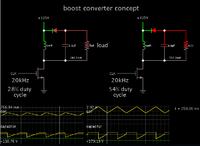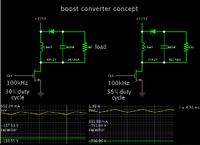Jérémy Thoraval
Newbie level 3

- Joined
- Dec 10, 2013
- Messages
- 3
- Helped
- 0
- Reputation
- 0
- Reaction score
- 0
- Trophy points
- 1
- Activity points
- 23
Hello,
I would like to convert a voltage of 230VAC in a variable voltage between 140VDC and 380VDC (0.6A max.)
I assume 230VAC to a bridge (with capacitor) that comes into a DC voltage of 325VDC. Then it goes in a buck delivers 140V output and everything is in a boost assembly 140VDC variable (at a current of 0.25A) 380 VDC (at a current of 0.6A).
Is this feasible with these simple editing Buck / Boost?
How to drive the gate of the mosfet? (VG input is 325V ...).
I would like to convert a voltage of 230VAC in a variable voltage between 140VDC and 380VDC (0.6A max.)
I assume 230VAC to a bridge (with capacitor) that comes into a DC voltage of 325VDC. Then it goes in a buck delivers 140V output and everything is in a boost assembly 140VDC variable (at a current of 0.25A) 380 VDC (at a current of 0.6A).
Is this feasible with these simple editing Buck / Boost?
How to drive the gate of the mosfet? (VG input is 325V ...).



